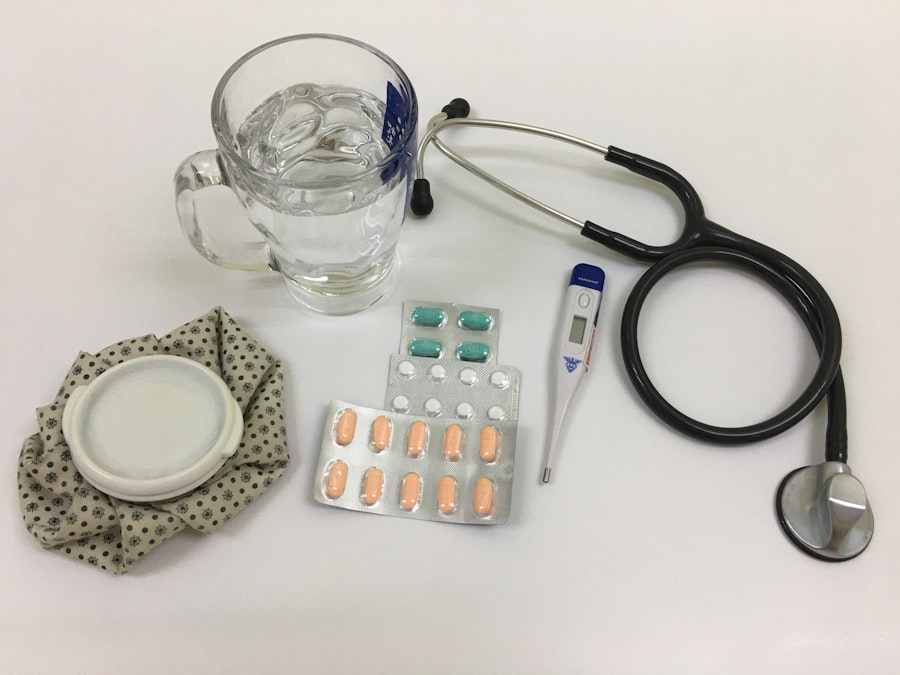
Respiratory therapists (RTs) play a crucial role in the healthcare system, primarily focusing on the assessment, treatment, and management of patients with respiratory and cardiopulmonary disorders. They are trained to provide care for individuals suffering from conditions such as asthma, chronic obstructive pulmonary disease (COPD), pneumonia, and other respiratory ailments. Their expertise extends to administering therapeutic treatments, conducting diagnostic tests, and educating patients about their conditions and the importance of adhering to treatment plans.
In many cases, RTs are the frontline caregivers who monitor patients’ vital signs, assess lung function, and determine the most effective interventions to improve respiratory health. In addition to direct patient care, respiratory therapists collaborate with physicians, nurses, and other healthcare professionals to develop comprehensive treatment plans tailored to individual patient needs. They are skilled in using advanced medical equipment such as ventilators, nebulizers, and oxygen delivery systems.
Their role is not limited to acute care settings; RTs also work in rehabilitation programs, home care environments, and outpatient clinics. This versatility allows them to impact patients’ lives significantly, whether they are providing emergency care in a hospital or offering long-term management strategies for chronic conditions in a home setting.
Key Takeaways
- Respiratory therapists play a crucial role in helping patients with breathing disorders and lung diseases by providing respiratory care and treatments.
- To become a respiratory therapist, one must complete an accredited respiratory therapy program and obtain a state license. Continuing education is also required to maintain licensure.
- Respiratory therapists can work in various settings such as hospitals, nursing homes, home healthcare, and outpatient clinics, providing care to patients of all ages.
- The average salary for respiratory therapists in the USA is competitive, and they may also receive benefits such as healthcare, retirement plans, and paid time off.
- Respiratory therapists can advance their careers by pursuing specializations such as neonatal/pediatric care, adult critical care, or sleep disorders. The demand for respiratory therapists is expected to grow in the future due to an aging population and advancements in medical technology.
Educational Requirements and Training
To become a respiratory therapist, individuals must complete a formal education program that typically culminates in an associate’s or bachelor’s degree in respiratory therapy. The curriculum includes a blend of theoretical knowledge and practical skills, covering subjects such as human anatomy, physiology, pharmacology, and respiratory care techniques. Students engage in hands-on training through clinical rotations in various healthcare settings, where they gain real-world experience under the supervision of licensed professionals.
This combination of classroom instruction and clinical practice is essential for developing the competencies required to excel in the field. In addition to completing an accredited educational program, aspiring respiratory therapists must obtain licensure to practice in their respective states.
Continuing education is also a vital component of a respiratory therapist’s career, as advancements in technology and treatment protocols necessitate ongoing learning. Many states require RTs to complete a certain number of continuing education credits periodically to maintain their licensure.
Job Opportunities and Settings

The job market for respiratory therapists is diverse and expanding, reflecting the growing demand for respiratory care services across various healthcare settings. RTs can find employment in hospitals, where they often work in critical care units, emergency departments, and general medical wards. In these environments, they are responsible for managing patients on mechanical ventilation, performing arterial blood gas analyses, and providing emergency interventions for respiratory distress.
The acute care setting is just one of many options available; RTs also have opportunities in outpatient clinics, where they may conduct pulmonary function tests and provide education on managing chronic conditions. Beyond traditional healthcare facilities, respiratory therapists can explore roles in home health care, where they deliver services directly to patients in their residences. This setting allows RTs to work closely with patients who require ongoing respiratory support but prefer to receive care in the comfort of their homes.
Additionally, RTs may find positions in rehabilitation centers, where they assist patients recovering from surgeries or illnesses that impact lung function. The versatility of the profession means that RTs can tailor their careers to align with their interests and strengths while contributing significantly to patient care across various contexts.
Salary and Benefits
| Category | Details |
|---|---|
| Salary | 60,000 per year |
| Bonuses | 10% of annual salary |
| Health Insurance | Full coverage for employee |
| Retirement Plan | 401(k) matching up to 5% |
The financial compensation for respiratory therapists varies based on factors such as geographic location, level of education, years of experience, and the specific healthcare setting in which they work. According to data from the U.S. Bureau of Labor Statistics (BLS), the median annual wage for respiratory therapists was approximately $62,810 as of May 2022.
However, salaries can range from around $48,000 for entry-level positions to over $80,000 for those with advanced experience or specialized skills. Regions with higher costs of living or greater demand for healthcare services often offer more competitive salaries. In addition to salary, respiratory therapists typically enjoy a comprehensive benefits package that may include health insurance, retirement plans, paid time off, and opportunities for professional development.
Many employers also offer tuition reimbursement programs for RTs seeking further education or specialization. The combination of competitive pay and robust benefits makes respiratory therapy an attractive career choice for individuals passionate about healthcare and patient advocacy.
Career Advancement and Specializations
Respiratory therapy offers numerous pathways for career advancement and specialization. As RTs gain experience in the field, they may choose to pursue advanced certifications that allow them to focus on specific areas of practice. For instance, some may opt to specialize in neonatal or pediatric respiratory care, working with infants and children who require specialized interventions due to congenital or acquired respiratory conditions.
Others may pursue certifications in sleep medicine or pulmonary rehabilitation, expanding their expertise and enhancing their employability. Leadership roles are also available for those interested in advancing their careers beyond clinical practice. Experienced respiratory therapists may take on managerial positions within healthcare facilities, overseeing teams of RTs and ensuring high standards of patient care are maintained.
Additionally, some RTs choose to transition into education or research roles, contributing to the development of future professionals or advancing knowledge within the field through scholarly work. The diverse opportunities for growth within respiratory therapy make it a dynamic profession that can adapt to individual career aspirations.
The Future of Respiratory Therapy in the USA

The future of respiratory therapy in the United States appears promising due to several factors driving demand for respiratory care services. An aging population is one significant contributor; as individuals live longer, they often experience chronic health conditions that affect lung function. Diseases such as COPD and asthma are prevalent among older adults, necessitating skilled respiratory therapists to manage these complex cases effectively.
Furthermore, the increasing incidence of respiratory illnesses linked to environmental factors—such as air pollution and smoking—highlights the need for qualified professionals who can provide essential care. Technological advancements also play a pivotal role in shaping the future of respiratory therapy. Innovations such as telehealth have expanded access to care, allowing RTs to reach patients who may have difficulty attending in-person appointments.
This shift not only enhances patient convenience but also enables RTs to monitor patients remotely and adjust treatment plans as needed. As healthcare continues to evolve with technology at its forefront, respiratory therapists will need to adapt their skills and knowledge accordingly. In summary, the role of respiratory therapists is integral to modern healthcare delivery.
With a solid educational foundation and diverse job opportunities available across various settings, RTs are well-positioned for a rewarding career that offers both personal fulfillment and professional growth. As the demand for respiratory care continues to rise due to demographic shifts and technological advancements, the profession will undoubtedly remain vital in improving patient outcomes and enhancing quality of life for those with respiratory challenges.
If you’re exploring healthcare careers, particularly those focused on patient care and rehabilitation, you might find the article on club/2021/07/20/chiropractors/’>Chiropractors: Careers in the USA quite enlightening.
Similar to respiratory therapists, chiropractors play a crucial role in improving patients’ health by focusing on disorders of the musculoskeletal system and the nervous system, and the effects of these disorders on general health. Both professions require a strong foundation in science and hands-on clinical skills, making them excellent choices for those interested in a healthcare career that directly impacts patient well-being.
FAQs
What is a respiratory therapist?
A respiratory therapist is a healthcare professional who specializes in the assessment, treatment, and care of patients with breathing disorders and cardiopulmonary diseases.
What are the educational requirements to become a respiratory therapist in the USA?
To become a respiratory therapist in the USA, individuals must complete an accredited respiratory therapy program, which can result in an associate’s or bachelor’s degree. Additionally, they must obtain a state license by passing the National Board for Respiratory Care (NBRC) exam.
What are the job responsibilities of a respiratory therapist?
Respiratory therapists are responsible for assessing patients with breathing difficulties, providing treatments such as oxygen therapy and chest physiotherapy, managing ventilators, and educating patients on how to manage their respiratory conditions.
What is the job outlook for respiratory therapists in the USA?
According to the Bureau of Labor Statistics, the employment of respiratory therapists is projected to grow 19 percent from 2020 to 2030, much faster than the average for all occupations.
Where do respiratory therapists work?
Respiratory therapists can work in a variety of settings, including hospitals, long-term care facilities, home healthcare agencies, and outpatient clinics. They may also work in specialized areas such as neonatal or pediatric intensive care units.
What are the key skills needed to be a successful respiratory therapist?
Key skills for respiratory therapists include strong communication and interpersonal skills, critical thinking abilities, attention to detail, and the ability to work well under pressure. They must also have a thorough understanding of respiratory care techniques and equipment.



